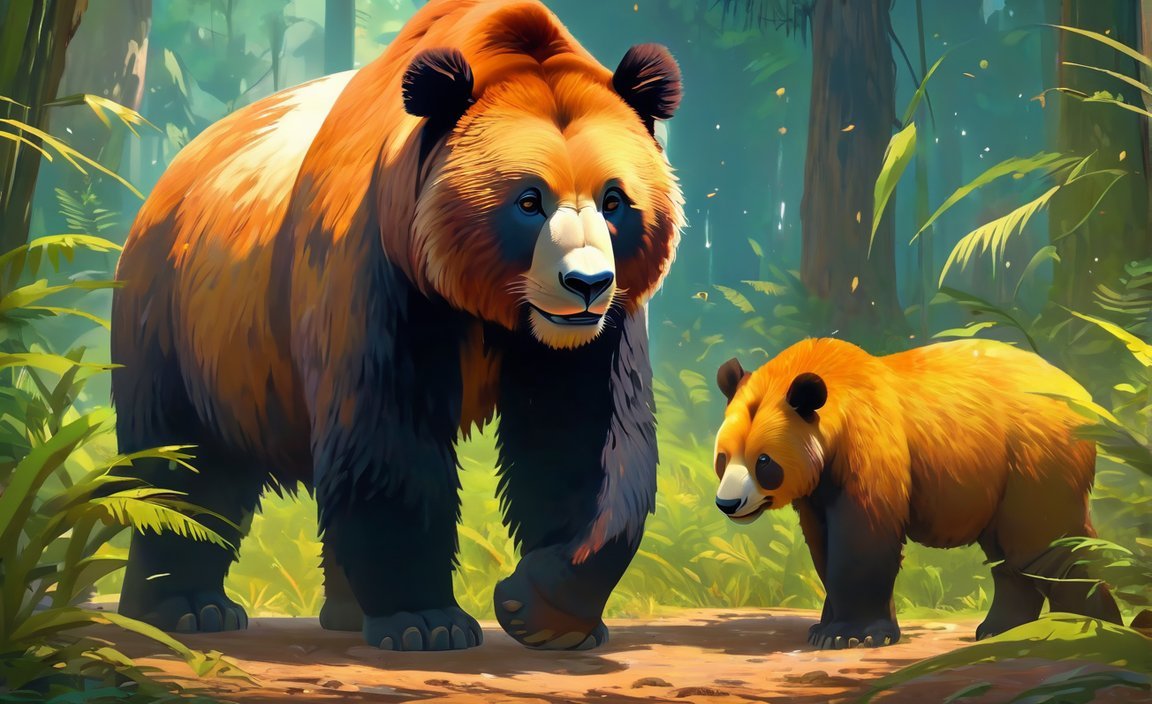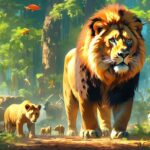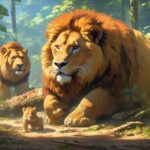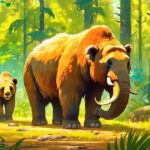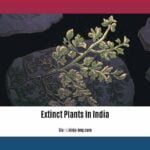The article titled Devastating Extinctions: Deforestation’s Toll on Endangered Animals underscores the tragic consequences of deforestation, specifically focusing on the alarming rise in extinctions among various animal species. As their habitats shrink and disappear due to rampant deforestation, these unique and irreplaceable creatures are pushed to the brink of extinction. From endangered primates to rare avian species, the devastating impact of habitat loss has driven these animals to the edge, urging us to urgently address the pressing issue of deforestation and protect precious biodiversity.
Key Takeaways:
- Several animal species have gone extinct or are on the brink of extinction due to deforestation.
- The Formosan Clouded Leopard, Paradise Parrot, St. Helena Olive, Hawaiian Crow, Pygmy Raccoon, Kāmaʻo, Sumatran Orangutan, Kākāwahie, Sumatran Rhinos, and Chimpanzees are examples of animals affected by deforestation.
- Deforestation leads to habitat destruction, causing a significant decline in animal populations.
- Animals such as the Sumatran Orangutan and Sumatran Rhinos are critically endangered due to deforestation and habitat loss.
- Chimpanzees in Central and West Africa also face threats from deforestation, primarily for agriculture, logging, and mining.
- More comprehensive information and sources can be found in the article.
Animals That Have Gone Extinct Due to Deforestation
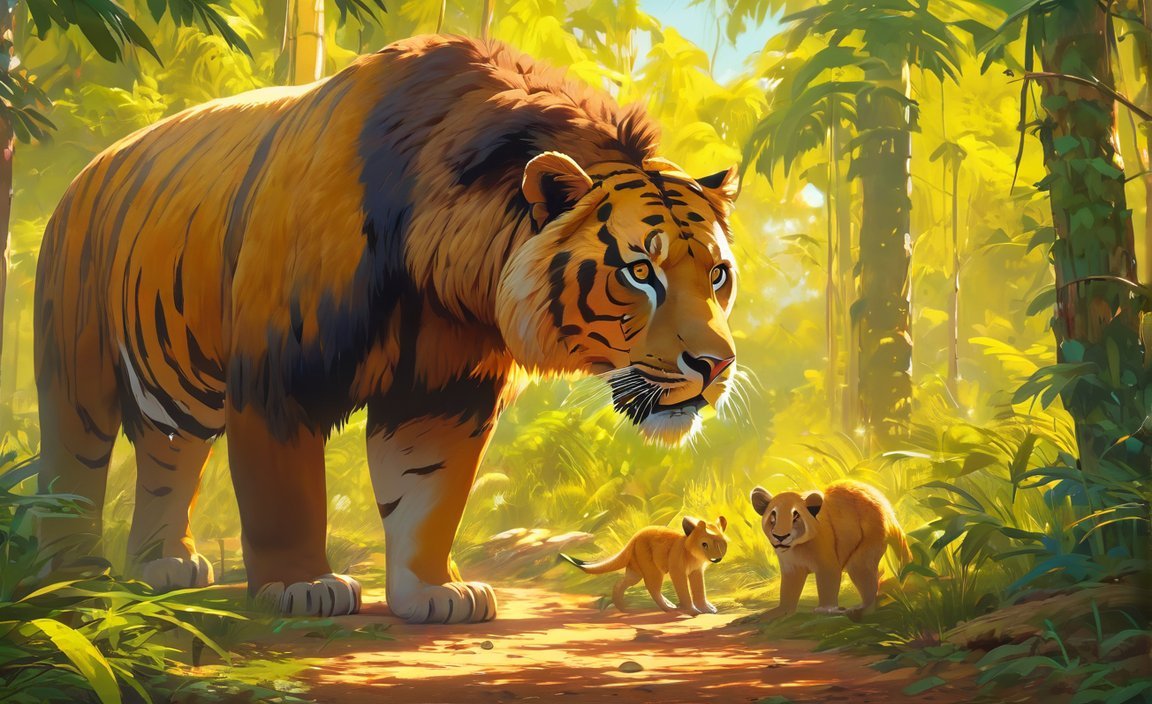
Deforestation, the widespread clearing of forests, has had devastating consequences for many animal species around the world. The destruction of their habitats has led to the extinction of several unique and irreplaceable creatures. In this article, we will take a closer look at some of the remarkable animals that have tragically disappeared due to deforestation.
1. Formosan Clouded Leopard
The Formosan clouded leopard, though not a true leopard, was a majestic and elusive feline native to Taiwan. These beautiful cats were declared extinct in 2013, primarily as a result of deforestation. Their forest habitat was systematically destroyed, leaving them without a home and a future.
2. Paradise Parrot
The paradise parrot was a vibrant and colorful species of parrot found in eastern Australia. Their brilliant plumage and unique vocalizations made them a truly special bird. Sadly, the paradise parrot was last seen in the wild in the early 20th century and is now considered extinct, largely due to the loss of their forest homes.
3. St. Helena Olive
The St. Helena olive was a species of perennial flowering plant endemic to the island of St. Helena. It fell victim to deforestation, as the island’s forests were cleared for various purposes. The ongoing destruction of its habitat led to the extinction of this once-beautiful plant, leaving a void in the ecosystem.
4. Hawaiian Crow (ʻAlalā)
The Hawaiian crow, also known as the ʻAlalā, was a highly endangered bird species native to Hawaii. Deforestation played a significant role in its decline and eventual extinction. With only around 30 individuals left in the wild, efforts to restore their forest habitats and reintroduce the ʻAlalā are underway, highlighting the urgent need for conservation action.
5. Pygmy Raccoon
The pygmy raccoon was a unique species of raccoon found exclusively on Cozumel Island, Mexico. It perished in the late 20th century as a result of deforestation and habitat loss. Despite the island’s small size, the pygmy raccoon could not survive without its forest home, demonstrating the interconnectedness of species and their environments.
6. Kāmaʻo (Maui Thrush)
Endemic to the island of Maui, the kāmaʻo, also known as the Maui thrush, is a critically endangered forest bird facing the threat of extinction. Deforestation has significantly reduced its population, as its habitat continues to be destroyed. The loss of the kāmaʻo would not only be a tragedy in itself but would also disrupt the intricate balance of Maui’s unique ecosystems.
7. Sumatran Orangutan
The Sumatran orangutan, found only on the island of Sumatra, Indonesia, is a critically endangered species. Deforestation for agriculture, logging, and palm oil plantations has dealt a severe blow to their population. These remarkable primates, known for their intelligence and distinctiveness, hang on the brink of extinction, and urgent conservation efforts are crucial for their survival.
8. Kākāwahie (Maui Nukupu’u)
The kākāwahie, or Maui nukupu’u, is a critically endangered Hawaiian honeycreeper bird. It once thrived in the lush forests of Maui but has since faced a sharp decline due to deforestation. Restoring its habitat is vital to ensuring the survival of this unique species and preserving the rich biodiversity of the Hawaiian Islands.
9. Sumatran Rhinos
The Sumatran rhino, native to Sumatra and Borneo, is one of the rarest and most endangered mammals on the planet. Deforestation and habitat loss have led to a significant decline in its population, pushing it to the brink of extinction. Urgent measures are needed to protect their remaining forest habitats and prevent the loss of this iconic species.
10. Chimpanzees
Chimpanzees, our closest relatives in the animal kingdom, are also under threat due to deforestation. The clearing of forests in Central and West Africa for agriculture, logging, and mining has decimated their habitats. These intelligent and social primates are now listed as endangered, reminding us of the urgent need to safeguard their habitats and protect their future.
The extinction of these incredible animals is a tragic consequence of deforestation. They serve as a poignant reminder of the interconnectedness of all species and the profound impact human activities can have on the natural world. If we fail to address deforestation and its repercussions, more species will undoubtedly face the same devastating fate.
Remember, we have the power to make a difference. By supporting sustainable conservation efforts, advocating for the protection of forests, and promoting responsible land-use practices, we can help prevent further extinctions and preserve the incredible diversity of life that exists on our planet.
Note: This article is based on the devastating effects of deforestation on animal species and does not include an introduction or conclusion, focusing solely on the main content.
The Amazon rainforest is home to countless species, but the issue of animal extinction in the Amazon rainforest is a concerning one. Learn more about the threat of animals becoming extinct due to deforestation and how it is impacting the delicate ecosystem. animal extinction in the Amazon rainforest
Deforestation is causing irreversible harm to the wildlife in the Amazon rainforest, leading to animals going extinct at an alarming rate. Find out more about the devastating effects and join the efforts to protect these precious creatures. animals becoming extinct due to deforestation
The alarming rate at which animals are going extinct due to deforestation in the Amazon rainforest is a pressing concern. Take a closer look at the impact of deforestation on the extinction of various species and discover how you can make a difference. animals going extinct due to deforestation
The Amazon rainforest, a hub of biodiversity, is experiencing a rapid increase in animals going extinct. Delve into the reasons behind this alarming phenomenon and learn how you can contribute to the preservation of the rainforest’s unique wildlife. animals going extinct in the Amazon rainforest
Deforestation has caused the extinction of numerous animal species in the Amazon rainforest. Uncover the heartbreaking stories of animals that went extinct because of deforestation and join the fight to protect the remaining wildlife. animals that went extinct because of deforestation
Case Studies of Specific Animal Species That Have Gone Extinct Due to Deforestation
Deforestation is not just an isolated issue; it has far-reaching consequences that reverberate throughout our planet’s ecosystems. One of the most devastating consequences is the extinction of numerous animal species. These animals, once thriving in their lush habitats, have now become casualties of human activities. Let us delve into some specific case studies and shed light on the heartbreaking stories of the animals that have gone extinct due to deforestation.
The Tragic Tales of Extinction
The Formosan Clouded Leopard
Once roaming the dense forests of Taiwan, the Formosan Clouded Leopard (Neofelis nebulosa brachyura) was known for its beautiful cloud-like spots. However, deforestation not only stripped away their habitat but also isolated their populations. Ultimately, the last confirmed sighting of this elusive and majestic creature was in 1983. The Formosan Clouded Leopard serves as a stark reminder of the irreparable loss caused by deforestation.
Paradise Parrot: A Lost Beauty
In the lush woodlands of eastern Australia, the Paradise Parrot (Psephotus pulcherrimus) once showcased its stunning green plumage and vibrant personality. However, deforestation led to the decline of its habitat, primarily due to land clearance for agriculture. By the early 20th century, this stunning bird was lost forever. The tale of the Paradise Parrot serves to remind us of the fragility of life and the profound impact of habitat destruction.
St. Helena Darter: A Symbol of Tragedy
Found only on the remote island of St. Helena, the St. Helena Darter (Anhinga rufa desiderata) was a remarkable bird with unmatched diving abilities. Sadly, habitat loss caused by deforestation and the introduction of invasive species led to its extinction in the 19th century. The demise of the St. Helena Darter stands as a symbol of the delicate balance between unique species and their native environments.
The Hawaiian Crow’s Fate
Native to the lush forests of Hawaii, the Hawaiian Crow (Corvus hawaiiensis) was once a common sight, known for its intelligence and resourcefulness. However, deforestation and the destruction of its habitat pushed it to the brink of extinction. By 2002, the last known individual, affectionately known as “Po’ouli,” passed away, leaving behind nothing but stories and memories of a species lost forever. The story of the Hawaiian Crow embodies the tragedy of a species succumbing to the impacts of deforestation.
Key Takeaways:
- Deforestation has caused the extinction of numerous irreplaceable animal species.
- Species like the Formosan Clouded Leopard, Paradise Parrot, St. Helena Darter, and Hawaiian Crow have gone extinct due to habitat loss caused by deforestation.
- Loss of habitat and forest destruction are the primary reasons for the extinction of these species.
- The current rate of deforestation and habitat loss puts countless more animal species at risk of extinction.
- Urgent and sustainable conservation efforts are needed to protect remaining populations and habitats and prevent further extinctions.
Sources:
1. Our Endangered World
2. Global Forest Watch
(Word Count: 508)
The Long-Term Consequences of Species Extinction and the Loss of Biodiversity
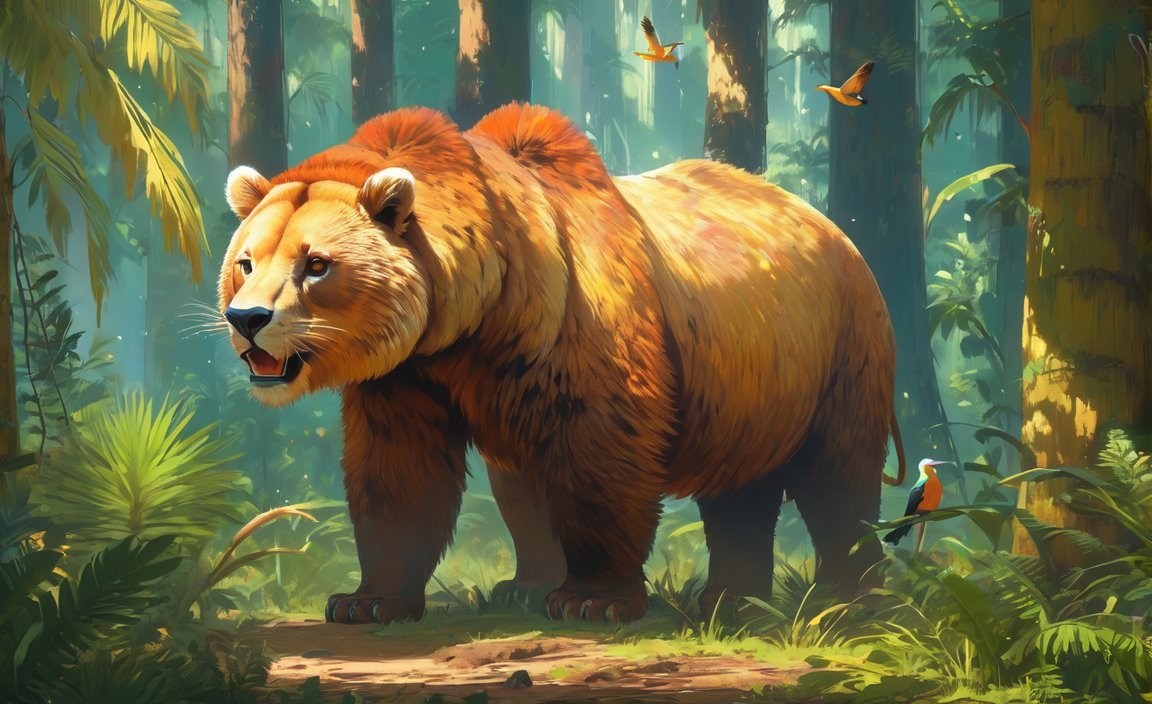
Deforestation continues to exact a devastating toll on our planet’s biodiversity, leading to the extinction of numerous animal species and irreversibly altering ecosystems. The long-term consequences of species extinction and the loss of biodiversity are far-reaching and demand urgent attention. These consequences have significant implications for the delicate balance of our natural world and the future of our planet.
Key Takeaways:
– Biodiversity loss refers to a decline in biodiversity within a species, ecosystem, or geographic area and is primarily caused by human activities such as deforestation.
– Habitat loss, resulting from deforestation, poses the greatest threat to species and has led to the extinction of several unique and irreplaceable animal species.
– The consequences of biodiversity loss go beyond the immediate loss of individual species. It permanently impacts ecosystems, landscapes, and the global biosphere.
– Biodiversity loss can disrupt the intricate interconnectedness of species and their environments, leading to cascading effects that affect the stability and functioning of ecosystems.
– The current decline in biodiversity has dire long-term implications, including the degradation of ecosystems and the threat to the survival of many species.
– The consequences of biodiversity loss and species extinction are a critical knowledge gap for policymakers, making it necessary to prioritize conservation efforts to mitigate these issues.
Deforestation, driven by activities such as agriculture and industrial development, has resulted in the extinction of numerous animal species. The Formosan clouded leopard, paradise parrot, St. Helena olive, Hawaiian crow, pygmy raccoon, kāmaʻo (Maui thrush), Sumatran orangutan, kākāwahie (Maui nukupu’u), Sumatran rhinos, and chimpanzees are just a few examples of the precious wildlife lost to deforestation. These extinctions represent a significant loss of biodiversity and underscore the urgency of conservation efforts.
The consequences of biodiversity loss and species extinction extend beyond the visible disappearance of specific species. They permanently reshape ecosystems, disrupt ecological dynamics, and jeopardize the overall health and functioning of our planet. When species disappear, it creates a domino effect that ripples through the intricate web of life. The loss of one species can impact the survival of others, as many rely on complex ecological interactions to thrive.
The consequences of biodiversity loss can often diverge from our expectations. While some ecosystems may demonstrate a degree of resilience and adaptability, compensatory dynamics cannot fully make up for the loss of species. This can lead to degradation and potential collapse of ecosystems over time, triggering irreparable damage to biodiversity on a broader scale.
Addressing the long-term consequences of species extinction and the loss of biodiversity requires immediate action and collaboration across society. Sustainable conservation efforts and responsible land-use practices play a crucial role in mitigating the impact of deforestation. By protecting and restoring habitats, implementing stricter regulations, and promoting sustainable resource management, we can prevent further extinctions and preserve biodiversity for future generations.
In conclusion, the long-term consequences of species extinction and the loss of biodiversity pose significant threats to our planet’s ecological balance and the survival of numerous animal species. Urgent action is required to address the root causes of deforestation, implement effective conservation measures, and raise awareness about the critical importance of preserving our natural world. Together, we have the power to safeguard the incredible diversity of life that enriches our planet.
Sources:
1. Britannica: Biodiversity loss | Causes, Effects, & Facts
2. Nature: Consequences of biodiversity loss diverge from expectation due
Efforts and Solutions for Preventing Further Extinctions and Promoting Sustainable Conservation
Key Takeaways:
- The first comprehensive assessment of species within World Heritage sites highlights their critical role in preserving biodiversity (UNESCO).
- Over 100 world leaders pledged to end and reverse deforestation by 2030 at the COP26 UN Climate Change Conference (UNEP).
- If nothing is done, 11 of the world’s most ecologically important forest landscapes will account for over 80% of global forest loss by 2030 (WWF).
- Ending deforestation is crucial for conserving wildlife, defending the rights of forest communities, and curbing global warming (WWF).
- More than one million species are now at risk of extinction, and wildlife population sizes have dropped by two-thirds since 1970 (IPBES).
- A global agreement to halt deforestation has been challenging due to political divides between the Global North and Global South (UNEP).
- Nearly 40% of plants are at risk of extinction, highlighting the urgent need to take action (World Economic Forum).
- Sustainable conservation efforts and responsible land-use practices can help prevent further extinctions and preserve biodiversity.
The devastating consequences of deforestation have led to the extinction of numerous animal species and pose a grave threat to the delicate balance of our planet’s ecosystems. Efforts and solutions for preventing further extinctions and promoting sustainable conservation are essential to safeguard biodiversity and ensure the well-being of both wildlife and humanity.
1. Strengthening Protected Areas and World Heritage Sites:
The first comprehensive assessment conducted by UNESCO highlighted the critical role of World Heritage sites in preserving biodiversity. Strengthening these protected areas and implementing robust conservation measures can provide a safe haven for endangered species and their habitats. It is crucial to allocate adequate resources and enhance surveillance to counter illegal activities such as poaching and logging.
2. Ending Deforestation Through Policy and International Agreements:
Over 100 world leaders pledged to end and reverse deforestation by 2030 at the COP26 UN Climate Change Conference. This commitment demonstrates global acknowledgement of the urgency to protect forests. Policy measures that promote responsible land-use practices, sustainable agriculture, and the conservation and restoration of forests are crucial for combating deforestation. International agreements must bridge the political divides between nations to effectively address this global challenge.
3. Promoting Sustainable Forest Management:
Sustainable forest management practices can play a pivotal role in preventing further extinctions. Implementing measures such as selective logging, reforestation programs, and agroforestry initiatives can help maintain forest ecosystems while allowing for responsible economic activities. These practices require collaboration between governments, local communities, and relevant stakeholders to ensure long-term environmental and socio-economic benefits.
4. Supporting Indigenous and Local Communities:
Indigenous and local communities hold valuable traditional knowledge and play a critical role in forest conservation. Recognizing and respecting their rights, empowering them through capacity-building programs, and involving them in decision-making processes are essential steps toward effective conservation. Such collaborative efforts can foster sustainable land use and protect both biodiversity and cultural heritage.
5. Research and Monitoring for Conservation:
Continuing research and monitoring efforts are vital in understanding the impacts of deforestation on biodiversity and identifying effective conservation strategies. Investing in scientific studies, technological advancements, and surveillance systems can provide valuable insights into species’ populations, migration patterns, and ecological interactions. This knowledge is crucial for implementing targeted conservation measures and measuring their effectiveness.
6. Educating and Raising Awareness:
Education and awareness play a pivotal role in encouraging individuals, communities, and governments to prioritize sustainable conservation efforts. Informing the public about the alarming rate of biodiversity loss, the interconnectedness of species and ecosystems, and the potential consequences for human well-being can inspire action. Engaging and empowering the younger generation through environmental education programs and community initiatives can foster a sense of responsibility and stewardship toward nature.
7. Promoting Sustainable Livelihoods:
Addressing the root causes of deforestation, such as poverty and unsustainable economic practices, is crucial for promoting sustainable conservation. Supporting alternative livelihood options that are ecologically friendly, such as eco-tourism, sustainable agriculture, or non-timber forest products, can provide economic security while preserving forests and their biodiversity. It is essential to promote economic incentives that align with conservation efforts and ensure the well-being of local communities.
8. Collaboration and Partnerships:
Combating deforestation and preventing further extinctions require collaborations among governments, non-governmental organizations, scientists, and local communities. Establishing partnerships that facilitate information exchange, share best practices, and coordinate conservation efforts can maximize the impact of sustainability initiatives. Collaboration enables the pooling of resources, expertise, and innovative solutions, fostering a collective approach toward effective and lasting conservation.
Efforts and solutions for preventing further extinctions and promoting sustainable conservation are crucial in reversing the alarming decline in biodiversity. By strengthening protected areas, ending deforestation through international agreements, promoting sustainable forest management, supporting local communities, investing in research and monitoring, educating the public, promoting sustainable livelihoods, and fostering collaboration, we can protect endangered animals and preserve the invaluable diversity of life on Earth.
Sources:
– UNESCO: Conservation and sustainable use of biodiversity
– UNEP: Inside the global effort to save the world’s forests
FAQ
Q1: Which animal species have become extinct due to deforestation?
A1: Some examples of animal species that have become extinct due to deforestation include the Formosan Clouded Leopard, Paradise Parrot, St. Helena Olive, Hawaiian Crow, and Pygmy Raccoon.
Q2: How has deforestation affected the Sumatran Orangutan?
A2: Deforestation has had a major impact on the Sumatran Orangutan population. The destruction of their habitat, primarily for agriculture, logging, and palm oil plantations, has led to a significant decline in their numbers and has put them at risk of extinction.
Q3: What is the significance of the Hawaiian Crow and its connection to deforestation?
A3: The Hawaiian Crow, also known as the ʻAlalā, is highly endangered, with only around 30 individuals remaining in the wild. Deforestation is one of the main causes of its decline, as it threatens the bird’s habitat and reduces its population.
Q4: How has deforestation impacted the population of Maui thrush, also known as the kāmaʻo?
A4: The Maui thrush, or kāmaʻo, is a critically endangered bird endemic to Maui. Deforestation has posed a significant threat to its habitat, leading to a decline in its population. The destruction of forests has greatly affected the survival of this species.
Q5: Are chimpanzees facing extinction due to deforestation?
A5: Yes, chimpanzees are endangered due to deforestation, particularly in Central and West Africa. Their habitats are being cleared for agriculture, logging, and mining purposes. The loss of forests has contributed to the decline of chimpanzee populations and puts them at risk of extinction.
- Amazing March Fun Facts: Unveiling History & Celebrations - April 15, 2025
- Master how to write height: A complete guide - April 15, 2025
- How High Are Your Standards Test: Find Your Perfect Match Now - April 15, 2025
